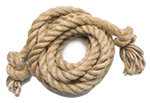 Each of us can easily apply the formula F = MA to student learning – think of an instructor, a student, and learning that happens. The electrical law E = IR (electromotive force = current times resistance) is just as easy to apply. However, both formulas assume unchanging, predictable obstacles – mass or resistance – and learning is most certainly nonlinear:
Each of us can easily apply the formula F = MA to student learning – think of an instructor, a student, and learning that happens. The electrical law E = IR (electromotive force = current times resistance) is just as easy to apply. However, both formulas assume unchanging, predictable obstacles – mass or resistance – and learning is most certainly nonlinear:
- If I tell students that they must read, they will (won’t they?)
- If I assign enough points, they will do the work (again, won’t they?)
Our goal is not really student compliance, nor a normal distribution of grades, but learning. Reflecting on courses I took many years ago, I played the GPA optimization game that so many of our students play. I ignored the relevant equation until one of those “ah-ha!” moments late in my senior year:
Learning = (knowledge + skills + perspective + insight)out – (knowledge + skills + perspective + insight)in.
Yeah, right … how can we measure THAT? But even if we could, would it suffice? How do we – or how might we want to – measure learning? Assign grades based on absolute achievement? On change in understanding? Or on a hard-to-describe mix of the two? For example, if students’ capabilities on a specific numerical scale were this, who would deserve the best grade?
| (Capability)out | (Capability)in | Learning |
| 33 | 33 | 0 |
| 25 | 22 | 3 |
| 22 | 11 | 11 |
It is not an easy question to answer – and it should not be. The answer depends on the discipline, on the course, on the student – and even on the instructor.
 That brings us to a third law of physics – “you can’t push a rope.” It seems to be a good metaphor for when we try to cover too much content or for when we try to share content too fast. It also seems relevant when we assign more work than students are willing to do. How can we turn it around so that we’re pulling rather than pushing? If we consider learner-centered teaching rather than instructor-centered teaching, we might achieve even more – i.e., maybe we can get the students to do some of the pulling.
That brings us to a third law of physics – “you can’t push a rope.” It seems to be a good metaphor for when we try to cover too much content or for when we try to share content too fast. It also seems relevant when we assign more work than students are willing to do. How can we turn it around so that we’re pulling rather than pushing? If we consider learner-centered teaching rather than instructor-centered teaching, we might achieve even more – i.e., maybe we can get the students to do some of the pulling.
I have no magic answers to share. Instead, I’ll suggest that we simply ask the question for now, and let it go from there. Contemplate the question again after grading a major essay, exam, or project. Consider it once more when configuring Moodle for next semester. And – if we’re willing – we will talk about it with each other, admitting that we find ourselves pushing ropes again every now and then.
Cartoon image courtesy Denny & Cher LeSage, published in their booklet “Da Tech Is…” printed by The Bull Press, 1973.

